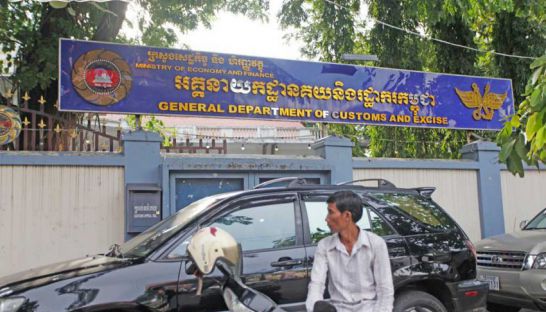Tariff cuts slash $150M from revenue
Tariff cuts slash $150M from revenue
Trade liberalisation under the ASEAN Free Trade Agreement (AFTA) cost Cambodia $150 million in lost tariff revenue last year, with the losses projected to climb further in the coming years as the Kingdom phases out tariffs on goods originating within the 10-member economic bloc, a customs official said yesterday.

Kun Nhem, general director of the General Department of Customs and Excise (GDCE), said scheduled tariff reductions under ASEAN’s Common Effective Preferential Tariff (CEPT) scheme were pushing Cambodia’s government to adopt more efficient customs collection procedures and develop alternative sources of tax revenue.
Speaking following the closed-door annual meeting of the GDCE yesterday, he said Cambodia collected $1.74 billion in customs and excise revenue in 2016, a 10 percent increase over the previous year, despite losing $150 million in potential revenue as a result of ASEAN-related tariff reductions.
“Despite losing 56 percent more revenue last year to tariff concessions under AFTA, we still managed to increase overall customs revenue,” he said.
Nhem attributed the net revenue gain to GDCE’s improved customs control systems and better enforcement, as well as a successful crackdown on smuggled goods.
Revenue also grew on revised excise taxes, including a higher “specific tax” on certain products such as luxury goods, automobiles and cigarettes that went into effect last April.
The AFTA commits signatories to phase out tariffs on the imports of virtually all products originating within ASEAN. When Cambodia joined the agreement in 1999 it was granted an extended timeframe to implement the reduced tariff rates, as well as exemptions on certain products.
Nhem said the GDCE faces a formidable challenge ahead as it targets 10 percent annual growth in customs revenue, adding that the agency must adopt more efficient customs collection procedures to offset falling tariffs.
“We predict that over the next three years – 2017, 2018 and 2019 – the amount of [customs revenue] lost due to concessions for the free trade agreement will increase more and more,” he said.
The customs tariff is Cambodia’s main trade policy instrument and a major source of government revenue, amounting to nearly 55 percent of national tax revenue and about 8 percent of GDP.
Joseph Lovell, a partner at regional law firm Sciaroni & Associates, said with import tariffs on goods originating both within and outside the ASEAN region scheduled to fall further the Cambodian government appears to trying to improve the efficiency of tax collection through better enforcement of existing tax laws and regulations.
“As tariff rates fall it would make sense to increase efficiency to plug existing holes in the revenue net,” he said.
Nhem said the government was seeking to extend tariff-reduction exemptions on sensitive products such as petroleum. It would also consider further revising the specific tax, though there was no immediate plan to do so.
“We may consider revising the specific tax on some luxury goods because this tax can apply to certain goods that negatively affect the environment or public health,” he said.
Seng Voeung, Ford division manager of RMA Cambodia, said last April’s increase in the specific tax, which raised its level on automobiles and spare parts, pushed new car prices beyond the affordability of many customers. He said the sticker price a new Ford Explorer SUV, for instance, rose to over $100,000 after the tax was applied, from about $80,000.
“Cars imported from within ASEAN can sell at a lower price, but cars imported from outside ASEAN must sell at a very high price because of the tariff,” he said.
“As a result, we hardly import any cars from the European Union anymore.”
Son Chhay, chief whip of the opposition Cambodia National Rescue Party, said the GDCE still has a long way to go in eliminating the corruption and inefficiencies that deprive Cambodia of its national revenue. He estimated that up to $500 million a year is lost to rampant smuggling of goods such as petroleum and jewellery.
“If we collect revenue from both customs and taxation according to the law we will generate at least another $1 billion a year for the nation,” he said. “That’s about equal to the amount we borrow from abroad each year.”













